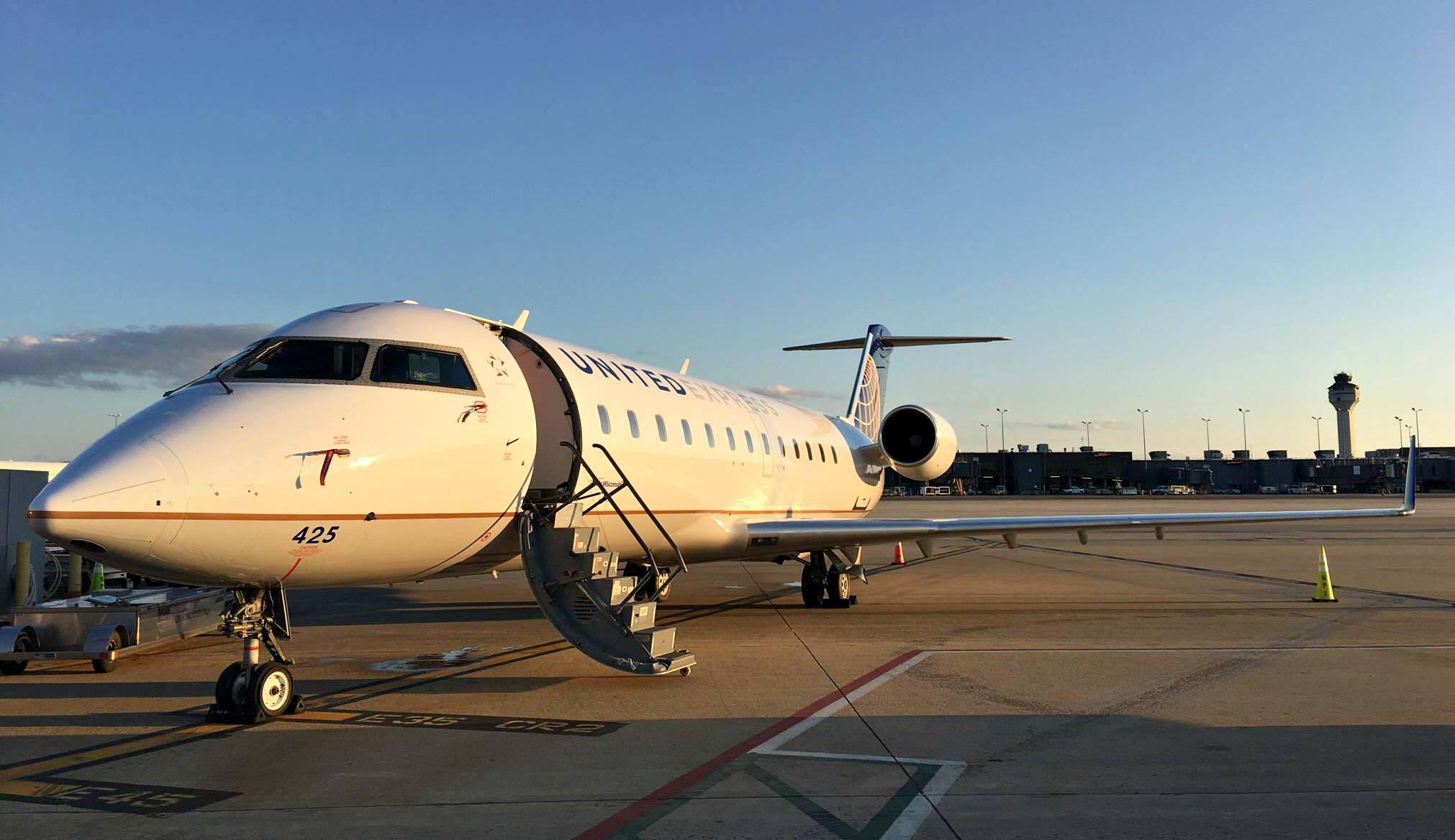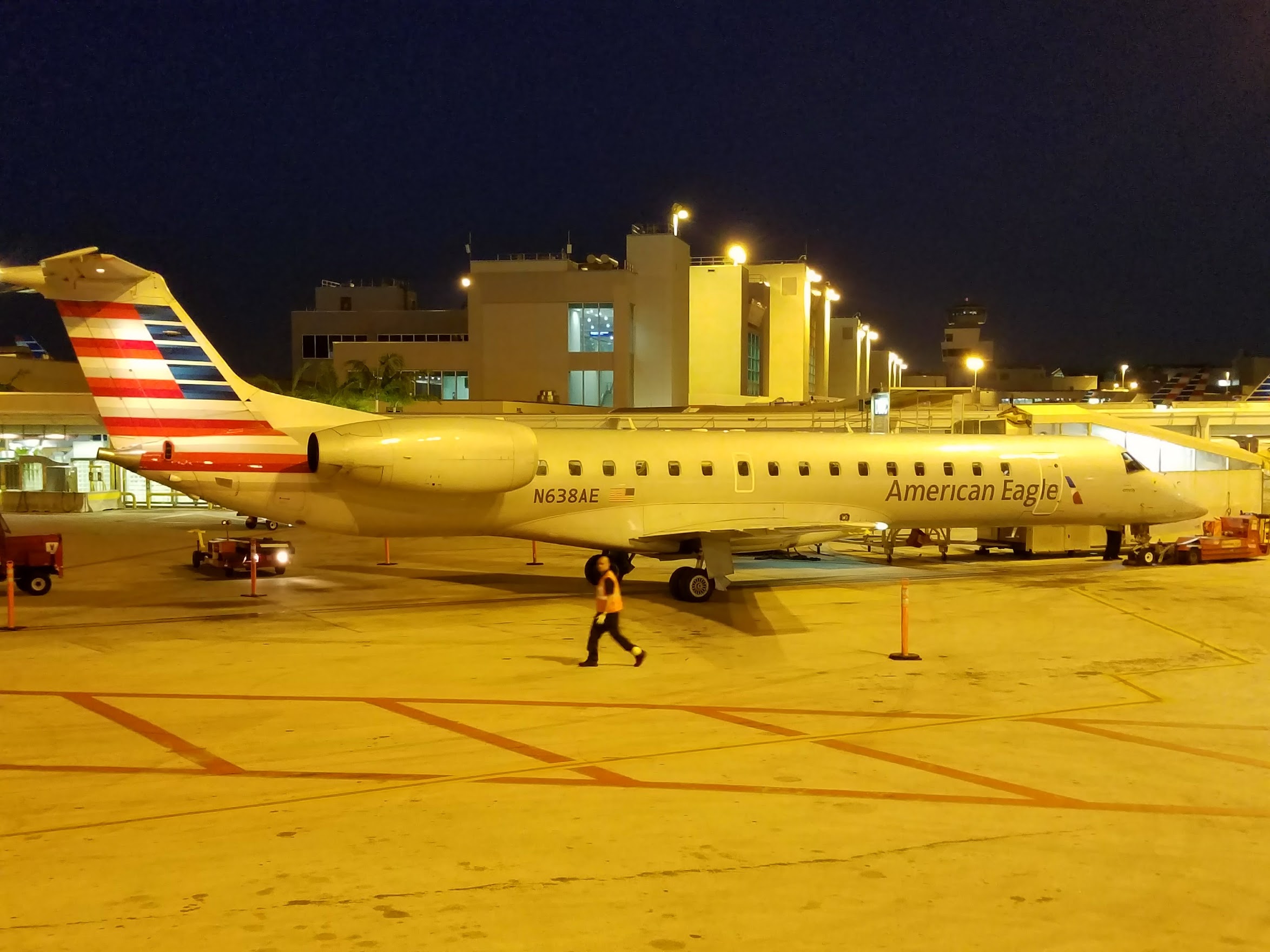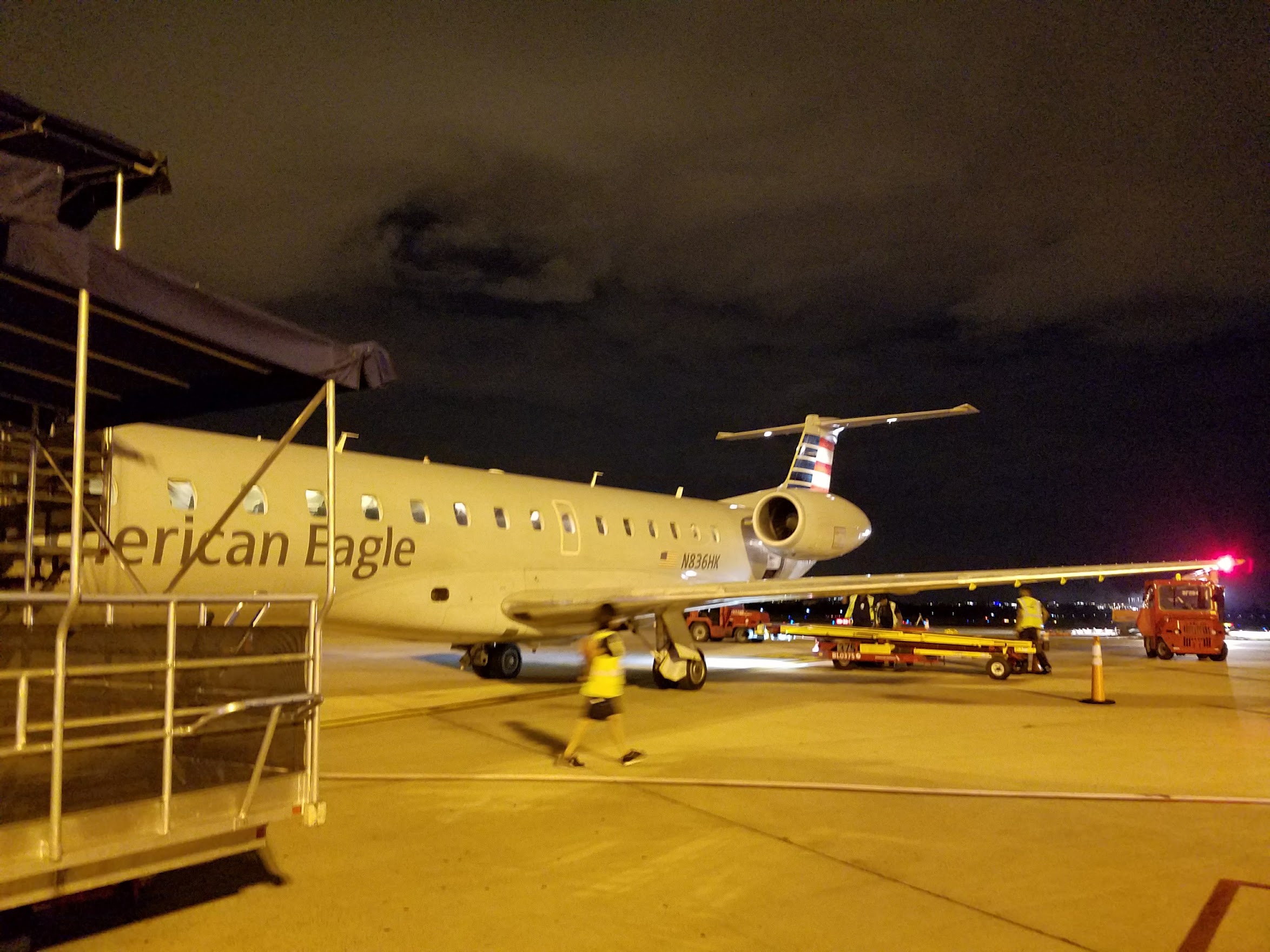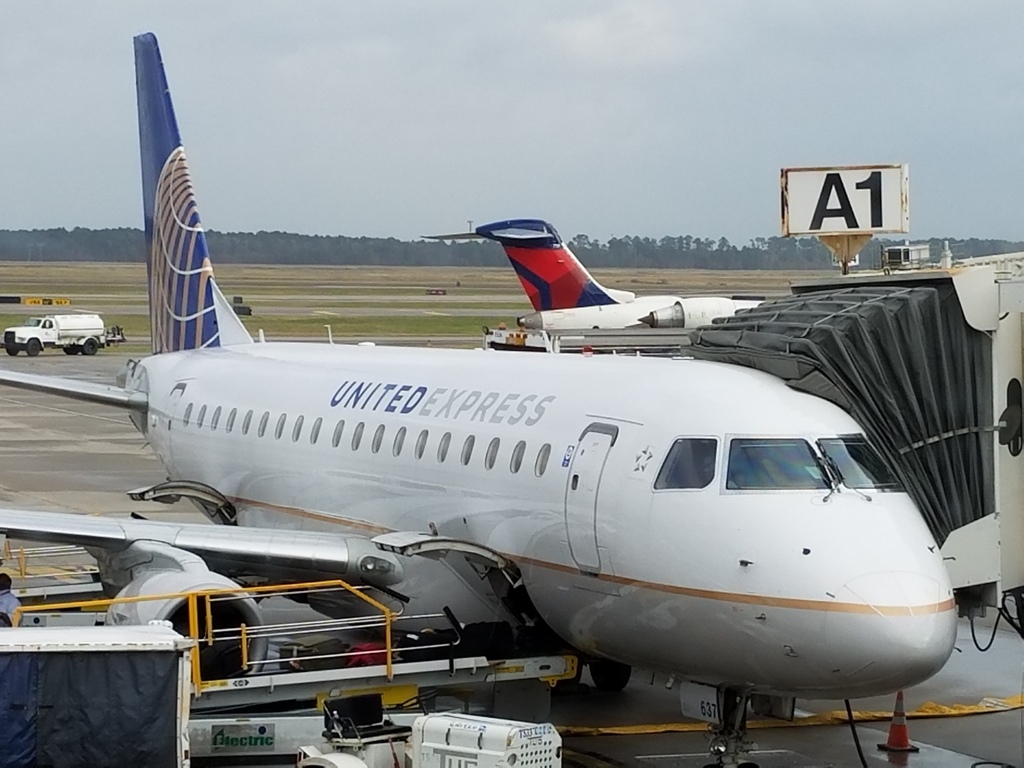The Trump administration’s proposed budget would cut the Essential Air Service program by 75%.
This will not happen, because House members from districts that are heavily subsidized get themselves onto the Transportation Committee. But it should happen. 75% isn’t even a deep cut in what’s mostly a silly program because it got more than doubling in budget last year. It’s out of control. (HT: Enilria)
I’ll be surprised if Congress passes a budget at all. If it does, it will look nothing like this budget. So it’s purely a weird political exercise, since it commits an administration to a whole lot of unpopular positions. But that hasn’t stopped them yet this term. It’s only been three and a half months! On this issue, though, they’re basically right but a funding cut isn’t enough.

In Tyranny of the Status Quo (1984), Milton Friedman wrote “Nothing is so permanent as a temporary government program.” The Essential Air Service program was created 47 years ago as a temporary measure to soften the blow of airline deregulation. It provided for a ’10 year transition’ period in which small community service could receive subsidies. The program was supposed to end in 1988.
Now, about 175 communities have been receiving subsidies. More than a quarter of those are in Alaska.
- Generally 30-50 seat aircraft, and usually two roundtrips a day
- Or more frequencies with 9-seat aircraft
Subsidized cities are supposed to have at least 10 passengers per day, though this requirement can be waived. Many of the planes fly largely empty.

Last year’s FAA reauthorization more than doubled funding for the program, with promised increases in future years.
Airports within 210 miles of a medium hub or larger used to be capped at a subsidy of $200 per passenger because obviously why should taxpayers pay for this..? But the latest update to the law more than tripled this to $650 per passenger for airports within 175 miles of the larger facility.
Remember, people choose to live far away from an airport. And for many of these airports there’s just no justification for subsidies at all.
- When they’re within reasonable driving distance of another airport
- The average airline passenger has a six figure income, making this reverse Robin Hood
- And shouldn’t flying empty and inefficient planes raise environmental concerns?

If you’re traveling out of Pueblo, Colorado you could just as easily drive to Colorado Springs to start your journey. Hot Springs, Arkansas is less than an hour from Little Rock. Decatur, Illinois is less than an hour from both Champaign and Springfield. Why subsidize service 110 miles away to St. Louis? The new law did at least restrict subsidies to airports in the contiguous 48 states that are “at least 75 miles from the nearest medium or large hub airport.” But there’s no reason the distance needs to be measured from a hub!
- Lancaster, Pennsylvania is about half an hour from Harrisburg
- Muskegon County Airport is less than an hour from Grand Rapids
- Owensboro-Daviess County, Kentucky is under an hour from Evansville, Indiana
Not only didn’t the program die in 1988, it grew to $22 million in 1998 and to a discretionary $155 million in 2018. It was authorized at:
- $340 million for fiscal year 2025
- $342 million for fiscal year 2026 and 2027
- $350 million for fiscal year 2028

The program’s requirement for an average of 10 passengers per day departing an airport can even be waived multiple times under the new law. The DOT can also waive some subsidy limits, too.
The reason this program lasts is concentrated benefits and dispersed costs. Members of Congress and constituents in districts receiving these subsidies care a great deal about them and are willing to exert muscle and treasure to keep them, while the public at large cares very little about the program. At less than $2 per person per year, there’s little incentive for the median American to learn about the program let alone oppose it. But Members of Congress whose districts benefit get onto House and Senate committees responsible for the funds.
Spending on the program had already quintupled over the past 25 years before being almost tripled in this new legislation. It’s grown under both Republican and Democrat-controlled Congresses and administrations. It’s a bipartisan boondoggle.


Free market enterprise is the best way to allocate scarce resources.
Congress the government needs to quick spending like drunken sailors.
No offense intended to sailors! (; by the way.
“Nothing is so permanent as a ‘temporary’ government program.” – Milton Friedman
Whoops . . . great minds think alike.
EAS is a gravy train for the regionals. Keep that in mind whenever you see RAA in the news and lobbying for something.
While we’re at it let’s look at the subsidies that the oil companies receive, either in tax breaks, depletion allowances, intangible drilling costs or underpriced royalties on government lands. Our brave and independent Congress will surely get serious about this real inefficiency. Oh, wait….
Do you realise that the subsidy is about $1 per man, woman, & child in the US? Has it come to this that we cannot pay for such a programme. My home town of Carlsbad New Mexico is an EAS airport. It’s four hours to drive to Albuquerque, 2 1/2 to El Paso, but to this sort of thinking why don’t you eliminate all airports that receive any government subsidy (they all do)? It’s only an 18 hour drive to Los Angeles!
@Derek Why does it matter what the subsidy costs when divided among the entire population – putting to one side that less than half of the population are taxpayers? That would be an excuse to pick our pockets and redistribute wealth for any thin reason, as long as it’s only a few bucks at a time.
Zero this out. If you don’t like your local airport options . . . move.
And for a lot of business these days, nearly instantaneous to connect via Zoom or Teams.
This program should be terminated in the lower 48 states and Hawaii. Maybe it has a limited role in Alaska.
The requirement that the distance is measured to a medium or large hub means that the program literally weakens other airports that are nearby. Let’s say there is an unsubsidized airport served by regional jets marketed by American, Delta and United that is 60 miles away. Why should we subsidize any flights when there is free market provided service an hour away? All because the nearest “hub” is 120 miles away?
This is why government subsidies are abused. It’s as bad as the unjustified subsidies for Hollywood production.
“So it’s purely a weird political exercise, since it commits an administration to a whole lot of unpopular positions. But that hasn’t stopped them yet this term. It’s only been three and a half months!”
Pure projection. First, Dems are the ones into performative political gestures. It must be strange to see someone support a position they actually believe in. Second, this admin has actually committed to wildly popular positions, and have boxed Dems in the corner having to defend governmemt waste, open borders, Ms 13 gang members, men in women’s sports, etc…all wildly unpopular positions. Third, cutting ESA is only wildly unpopular in those specific districts served. Sure there are some politicians of all stripes who are self serving, but most GOP are against more subsidies and more government power over the marketplace.
“Has it come to this that we cannot pay for such a programme.”
The question isn’t whether we “can”, it’s whether we “should”.
@Derek I’d rather that $1 subsidize train service or bus service that is more useful than infrequent planes that are still unaffordable and fly empty.
Distance is the wrong metric to use. A better metric would be terrain inaccessibility. Some mountainous areas are hard to traverse by train or car and need essential air travel during winter. Parts of Alaska are so remote that it is uneconomical to build roads (or too dangerous to use them for much of the year). But these remote regions can be important to the overall economy (oil and gas pipeline construction, salmon fishing, and crab harvesting). I have no problem with $1 per year per American supporting these important industries in Alaska. I agree with other commentors that the program should be restricted for most of the lower 48 (with possible exceptions for remote areas of the Rockys and Appalachian mountains).
” I have no problem with $1 per year per American supporting these important industries in Alaska.”
“It’s easy to be conspicuously compassionate if others are being forced to pay the cost.” Murray Rothbard
@Derek – if Carlsbad can support air traffic without a subsidy, then it should. No one is saying that the airports should be eliminated, just that the market should dictate pricing without taxpayer support.
Also worth point out that those who are typically traveling in Carlsbad are highly compensated, very well educated folks doing work at the National Lab.
I used to live in a EAS city. Since I didn’t own a car I loved the service.
@Mike P Nearly all Americans benefit from greater oil production and healthy wild-caught salmon. These are industries that are beneficial to the nation as a whole. I have no problem with contributing to them and having other Americans who also benefit contribute too. $1 per year is an absolute bargain (I would put my break-even value at probably $50+ per year). If anything we should allocate MORE subsidies to Alaskan fishing and farming and away from unhealthy agricultural products from the midwest like high fructose corn syrup and soybean oil (which receive billions in subsidies).
If towns want commercial flights, let them incentivize the airlines, not the US tax payer.
Ok Gary – a few things. I am not an expert, though I did stay at the Hyatt in PIT last night, it was actually rather convenient.
The Essential Air Program is likely what you say it is. But underneath it all, it helps support networks and reach to underserved communities which in times past were actually very important (or thought to be important!).
And like all capital outlays, there is some risk involved. Is there an ROI? My guess is absolutely. Making it easy for people to travel and connect with each other builds community.
We are not getting any smaller. If you believe as I do*, you will see that encouraging capital to locate permanently is a wise use of community resources.
-Jon
* My favorite saying from Milton. I use it all of the time now for the last several years in public speaking. I tend to excite people, and using this phrase let’s them decide if they want to agree or not. Which is fine. I love civil discourse- it helps us move forward together.
What’a y’all say anyway: ‘gotta spend money to make money…’ I say, let’s keep serving the people, even those out in the boonies; and same goes for the postal service. Keep ‘em goin’!
@MikeP +1
If we didn’t have EAS, perhaps we would have better rail service throughout the country. Effective regional rail is key to having effective high speed rail.
Regardless, EAS and/or regional rail should be paid for by the states. A lot of states, like Texas, Wyoming, Arizona, have very low state income tax rates. Why not add a little to the income tax and pay for these “essential” services. California pays for “Amtrak California” which provides intercity rail in California — why can’t other states do this as well?
Is EAS important? In some communities but, as Gary pointed out, in places like Lancaster, PA it’s absurd waste (in a GOP district no less). I’m. It even sure I agree with us being offered in Alaska. When the state has enough money to pay people to live there then THEY should foot the bill for air service. Isn’t that how things work in America these days?
Personally, I’d rather see Washington reallocate EAS fund to ATC and existing airport modernization projects.
You know Gary’s being disingenuous when he starts talking about the environment
@Derek McGillicudy I’d rather not pay $1 to subsidize people with 6-figure incomes not wanting to travel half an hour to a larger airport (as in the examples given.) Maybe the program shouldn’t be eliminated outright but it should be seriously scaled back to places that are truly isolated (as it was originally). 2.5 hours is a good schlep so perhaps Carlsbad is isolated enough.
There are plenty of places out west where EAS flights connect towns that are hundreds of miles from the nearest non-EAS airport. It’s a lifeline for these smaller communities to have even lousy air service.
Then there are places elsewhere where there are EAS airports barely an hour away from perfectly fine airports. In addition to the ones listed in the article, MKL, JBR, TUP, and so many others simply should not be subsidized. Drive an hour or two to an airport with daily flights to dozens of destinations.
Carlsbad, NM is an EAS airport but Roswell, NM is not. If Carlsbad no longer was an EAS airport, the people flying in and out of the area could go to Roswell or El Paso. Some would go to Roswell which would boost the viability of the airport there. The draw of the caverns may be why Carlsbad has an EAS airport. The tourist money is spread around to various places that have tourists as customers. Then the people working in those places spread it further. Possibly it is cost effective to subsidize the airport due to the effect it has on the regional economy.
If these routes do not make economic sense they should go. If you want to live in a small town, which I get, you are willing to give up things that a medium size city provides. Like an airport nearby.
Tip of the iceberg. How much more does it cost to deliver mail 6 days a week to the boonies than my house? How much is the per-capita homeland security funds per-person in Montata vs. New York City? How much do urban citizens pay to subsidize farmers? BTW, in some African countries, farmers subsidize urbanites through legislation. It’s because small groups (like US sugar producers) use legislation to rip off the masses. Since US farmers are are small percentage of the population, as are African urbanites, these groups decide it’s OK to steal from the larger group and the legislature agrees.
Generally, it seems that the libertarian-types above loathe EAS, and some of the left-leaning folks could care less too, and who benefits from these subsidies is a combination of rural, native, and some wealthy types in remote, often beautiful, places out in the wilderness. Oh, the irony here. Yet, I still think the program has merits, does serve people in-need (not just the wealthy), creates jobs, and can always be further improved. To get rid of it wholesale is more harmful than helpful.
@Eric — Thank you for speaking up in favor of this. A lot of folks don’t know or care, until things affect them directly, then often, it’s too late. Wish we could do better than that.
@jns — As to Carlsbad, that is a good example of how these services can bring economic opportunity to these places, creating value, jobs, etc. To understand this, we’d need to appreciate the indirect ‘stakeholders’ viewpoint rather than a direct ‘shareholders’ view of relative value here. For that reason, I think EAS still has merit, though, as with anything, can always be improved. The ‘chainsaw’ method to change is too harmful. Incremental improvements are better.
@hwertz — I hear what you’re saying about these services sometimes helping the rich more than the poor, but, like rural post offices and hospitals, there is still inherent value in having this, too. Likewise, @Travelgirl, it’s a subsidy, NOT taxpayers directly paying the full ticket price so that rich folks to fly First Class to their third homes. It’s nuanced; I know.
@drrichard — Correct again, sir. Forever subsides for their beloved oil and gas. Oh, if only shame and hypocrisy were still effective. *sigh*
@George N Romey — Many things don’t make ‘economic’ sense, but are still essential and worthwhile. This recent crusade against ’empathy’ is confounding. Taking care of our people is still worthy of a great nation.
@Mike P — Eww, not your ‘Austrian school’ libertarian-anarchy gobbledygook, yet again. Oh, and I see you have new fanboy, @Mak, parroting similar disproven theories. Fellas, it doesn’t work well for most people. It just leads to destruction. Come back to reality. To your comrade, @Jon Biedermann, please, enough with ‘trickle-down’ Milton; it was and always will be a farce!
@KlimaBXsst — There are plenty of resources to go around, especially in this modern era, including to connect these places to civilization (within reason); please do not perpetuate this lie of ‘artificial scarcity,’ which tends to only benefit the ‘hoarders’ at the very top.
@JimC2 — I’ve been hearing that phrase, ‘gravy train,’ along with ‘common sense,’ both in a bastardized form, often with the former used to disparage others who they deem are ‘taking’ public money (you know, *your* taxpayer money) to use for something *you* personally disprove, such as, perhaps, this air service. So, is ‘gravy train’ something the god-king used recently, or are the propaganda networks pumping it out? I’d like to know from where it re-emerged.
@Dave W. — Not all that different from @JimC2, but wow, ‘African urbanites,’ oof, that sure was some thinly-veiled racism at the end there. Yikes.
It should be limited to turboprop. no jet should be subsidized.
In a way, this shows the hypocrisy of our government. Trump has passed dozens of executive orders bypassing what should be done by Congress. Why should this law be any different?
This makes me believe that all the executive orders he signs are more for political points than for actual efficiency or purpose.
Killing this law is right up his alley of government efficiency. But he can’t do it? However, killing programs (like DEI, which were passed by Congress) he can?
This smells more of killing programs to look good, and “trying to kill programs to look good.
Peoria, Bloomington, Quad Cities and Springfield IL currently are or at one time had essential air service. The planes are/were always completely booked. None of the carriers want to fly larger aircraft so we are committed to CRJ hell forever. So tired of Big3’s games!
this is why America does not have high speed trains
Breeze loves this type of flying Arvelo Sun Country even Jet Jew they all love that fee money
How about subsidies for hospitals in underserved areas to keep them from closing? If an EAS airport has survived bc of the subsidy then great. My bet is that many should have survived to this point without needing the subsidy if the costs were allocated properly, unlike oil and gas subsidies which are pure giveaways.
In a world where the federal government has begun shifting funding responsibilities back to the states for all kinds of things I fail to understand why the EAS program should be any different.
But current American logic…I live in FL. There are no EAS airports in our state. So, why should my tax dollars go to funding little-used air service when we need more money for storm hardening initiatives? Make the states that have EAS airports be the ones to provide the economic support to commercial flights that are not viable without subsidies. That is how we’re doing things these days, isn’t it?
The audience of We, the People may not understand the insanity of Milton Friedman, whose medal now is housed in in the former Chicago Theological Seminary. Somehow, the temporary nature of mental illness grew into a business to cure in deadly experiments. To think citizens with disabilities, and Yes, if not by aging all will eventually be in this school struggling to get around,perhaps to travel to the healing waters. But as we a ed e witnessing, what is replacing empty planes are empty minds. There will no Trout on the tables for the rompers of corruption are running through IT!
Ah, Essential Air Pork.
When my family needed to go to Quincy Illinois, we’d fly to St Louis, or perhaps Cedar Rapids, and drive just over two hours on good highways. I was actually shocked that it had EAS. Why?
Pueblo Colorado is 45 minutes drive up interstate 25 to COS, which has non-stop service to multiple hubs on each of the four majors. Those hubs span coast to coast. Some hub cities like Chicago, Denver, Dallas and Houston have non-stops on 2 or 3 airlines. Why is that not good enough? You’d spend longer getting from Staten Island to a commercial airport, with traffic, parking, TSA lines.
I’m glad to see Essential Air Pork being cut, deeply. Let’s focus our transportation money on our biggest needs. Like improved systems for our ever busier ATC; these have been ever delayed, with dire results. Or paving our federal highways; didn’t they used to be paved? /s